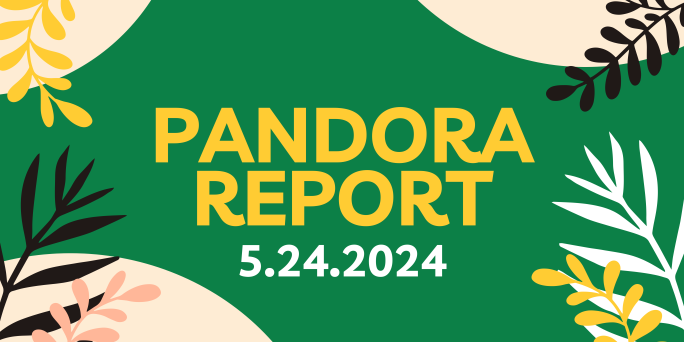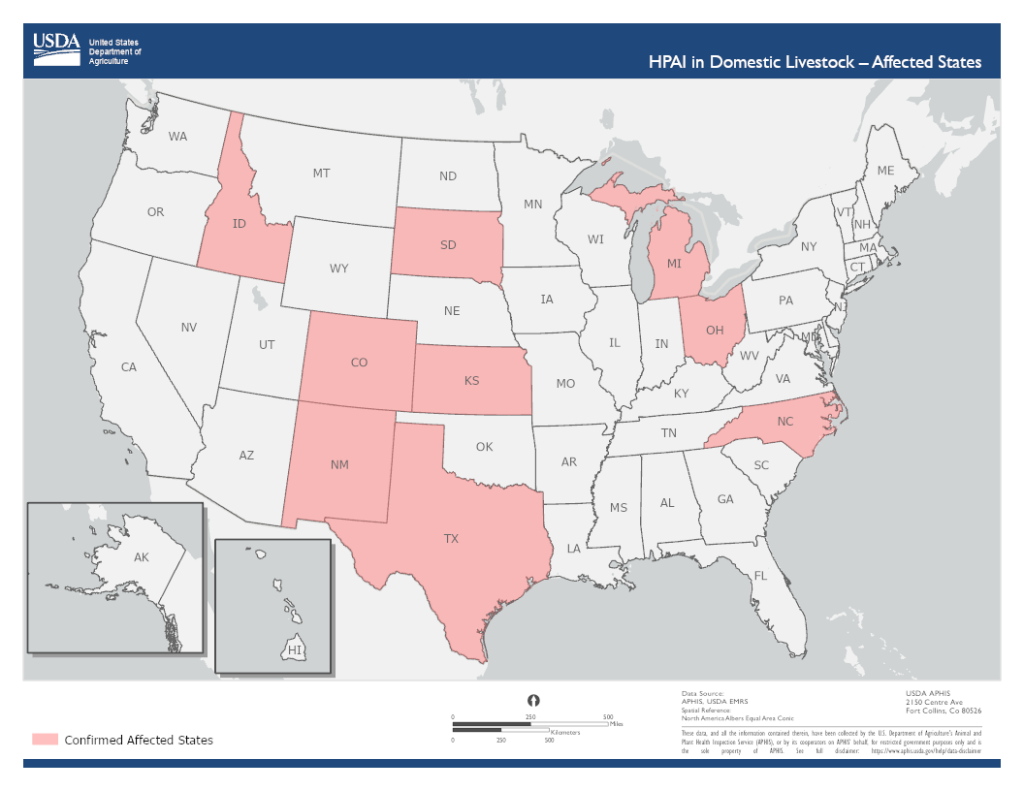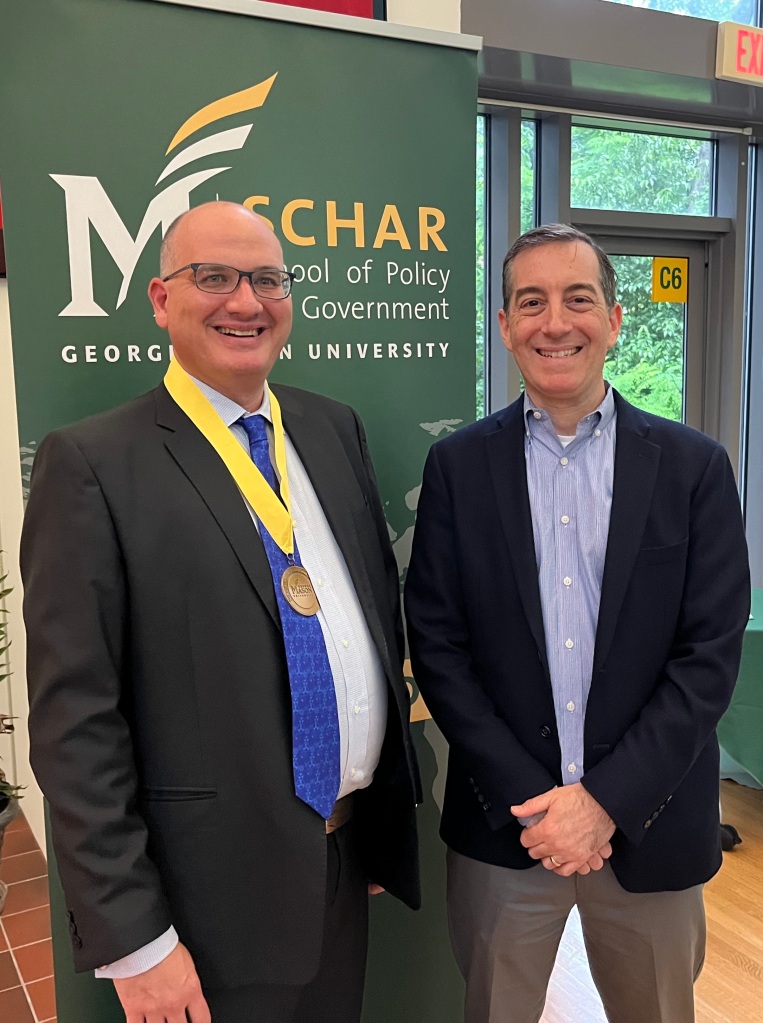This week’s edition of the Pandora Report focuses on stalled negotiations on amendments to the 2005 International Health Regulations and a new pandemic accord ahead of this week’s World Health Assembly, ARPA-H’s new investments in automated healthcare cybersecurity, BioNTech’s new $145 million in funding from CEPI, and updates on the scheme at the University of Florida to illegally purchase biochemical samples and certain drugs and then ship them illicitly to China.
Pandemic Accord Negotiations Stall Ahead of World Health Assembly
Negotiations on amendments to the 2005 International Health Regulations (IHR) and a pandemic accord set to be adopted at the World Health Assembly stalled earlier this week as member states struggled to reach consensus in both processes. This was despite member states’ agreements on much of the amendment and treaty draft texts. WHO Director-General Tedros Adhanom Ghebreyesus said in a statement that negotiators simply ran out of time and that “My wish is that we will come out of the Health Assembly re-energized and inspired, because the world still needs a pandemic treaty and the world needs to be prepared…This is not a failure.”
However, some disagree as negotiators may not come to an agreement on the pandemic accord for another year or more as delegates have indicated extensive further negotiations will be necessary. Key disagreements center on financing, how much of their products pharmaceutical companies ought to be required to specifically set aside for the countries most in need, and intellectual property rights and sanctions. In particular, as noted by The Guardian, is the question of what level of access to things like vaccines and therapeutics developing countries can expect in return for their efforts in things like monitoring and sharing information about pathogens spreading in their countries.
The pandemic accord has also become the subject of mis- and disinformation, with some claiming falsely that the treaty is actually a WHO power grab that will allow the organization to impose lockdowns on countries. A large blue bus was even spotted driving around near the Palais des Nations in Geneva where negotiations and the WHA are taking place, urging people to say “NO to the Pandemic Treaty” and to “STOP the UN Power Grab”.
Ultimately, member states agreed to end the negotiations and submit their outcomes for consideration at the WHA. The outcomes of the pandemic accord negotiations and the findings from the Working Group on the IHR are being presented at the World Health Assembly this week.
ARPA-H Announces Cybersecurity Automation Program for Healthcare Facilities
Recently, the Advanced Health Research Projects Agency for Health (ARPA-H) announced the launch of the Universal PatchinG and Remediation for Autonomous DEfense (UPGRADE) program, “a cybersecurity effort that will invest more than $50 million to create tools for information technology (IT) teams to better defend the hospital environments they are tasked with securing.”
In its statement, the agency explained “Cyberattacks that hamper hospital operations can impact patient care while critical systems are down and can even lead to facility closure. A major hurdle in advancing cybersecurity tools in the health sector is the number and variety of internet-connected devices unique to each facility. While consumer products are patched regularly and rapidly, taking a critical piece of hospital infrastructure offline for updates can be very disruptive. Delayed development and deployment of software fixes can leave actively supported devices vulnerable for over a year and unsupported legacy devices vulnerable far longer.”
“Filling this gap in digital health security will take expertise from IT staff, medical device manufacturers and vendors, health care providers, human factors engineers, and cybersecurity experts to create a tailored and scalable software suite for hospital cyber-resilience. The UPGRADE platform will enable proactive evaluation of potential vulnerabilities by probing models of digital hospital environments for weaknesses in software. Once a threat is detected, a remediation (e.g., patch) can be automatically procured or developed, tested in the model environment, and deployed with minimum interruption to the devices in use in a hospital.”
“Addressing vulnerabilities in health care and data security is a challenge that ARPA-H is uniquely positioned to address. ARPA-H’s Digital Health Security Initiative, DIGIHEALS, launched last summer and is focused on securing individual applications and devices. The agency has also recently partnered with Defense Advanced Research Projects Agency for the Artificial Intelligence Cyber Challenge, or AIxCC, a prize competition to secure open-source software used in critical infrastructure. UPGRADE aims to secure whole systems and networks of medical devices to ensure solutions can be employed at scale.”
“Through a forthcoming solicitation, UPGRADE seeks performer teams to submit proposals on four technical areas: creating a vulnerability mitigation software platform, developing high-fidelity digital twins of hospital equipment, auto-detecting vulnerabilities, and auto-developing custom defenses.”
“Multiple awards under this solicitation are anticipated. To learn more about UPGRADE, including information about the draft solicitation, virtual Proposers’ Day registration, and how to state interest in forming an applicant team, visit the UPGRADE program page.”
“For more information on HHS’ Cybersecurity Performance Goals and HHS’ cybersecurity work, visit HHS Cybersecurity Gateway.”
BioNTech Secures $145 Million in Funding from CEPI for Vaccine Plants in Africa
In a joint statement this week, BioNTech and the Coalition for Epidemic Preparedness Innovations (CEPI) announced that CEPI will provide BioNTech with an additional $145 million to help the company “enhance local R&D, clinical and commercial-scale manufacturing capacities to develop potential mRNA vaccines in Africa, for Africa,” at the company’s facility in Kigali, Rwanda. According to the company, “BioNTech’s commercial-scale manufacturing facility in Kigali was first announced in 2021 and inaugurated in December 2023. The facility is based on the Company’s high-tech, digitally enabled modular manufacturing units called BioNTainers, designed to manufacture a range of mRNA-based vaccines. BioNTech’s Kigali manufacturing facility could become the first commercial mRNA facility in Africa, intended to support the African Union’s and Africa CDC’s goal of producing 60 percent of total vaccine doses required on the continent by 2040.”
This funding is in addition to the $90 million CEPI provided the company with in September to support the development of vaccine candidates targeting mpox. Reuters reports that “CEPI CEO Richard Hatchett told Reuters that in a health emergency up to half of the Kigali plant’s annual capacity of around 50 million vaccines could be dedicated to making vaccines to respond to the emergency, as part of the funding deal…He said the money was for speeding up the development of the factory and to add on the capacity to produce material for research and clinical trials for third parties, not for specific vaccine development.”
University of Florida Employee and Students Implicated in Plot to Ship Biochemical Samples, Drugs to China
A research employee and several students from the University of Florida have been implicated in a scheme to illegally purchase thousands of drugs and biochemical samples and then illicitly ship the samples to China over the next seven years, according to reporting from NPR. It is not clear yet if the researcher and students (who were identified as co-conspirators) have been charged and arrested.
According to NPR, “The materials smuggled to China included what the government described as purified, non-contagious proteins of the cholera toxin and pertussis toxin, which causes whooping cough. Cholera is a generally non-fatal intestinal infection that can cause severe dehydration. Whooping cough is a highly contagious bacterial infection that can lead to violent coughing, vomiting and even respiratory distress – but is preventable with a vaccine…Other materials smuggled to China in the scheme included small amounts of highly purified drugs – known as analytical samples – of fentanyl, morphine, MDMA, cocaine, ketamine, codeine, methamphetamine, amphetamine, acetylmorphine and methadone, court records showed. Such small samples would generally be used for calibrating scientific or medical devices.”
Adding further intrigue to the matter, one of the students listed in the court document is Nongnong “Leticia” Zheng, who was also president of UF’s Chinese Students and Scholars Association-a PRC embassy-approved student organization that was allegedly targeted by the scheme’s organizers for recruitment of Chinese students. The organization protested last year the enactment of a law in Florida that “limits universities from recruiting students and faculty from China – and bans employing such students from working in academic labs without special permission.”
Prosecutors allege that Zheng, a marketing major, agreed to change her UF email signature to falsely claim that she was a biomedical engineering student in order to purchase the samples without raising suspicions. According to NPR, “Zheng, who said she lived most of her life in China, said in a tearful interview Friday at her apartment complex she was deceived and victimized by the scheme’s organizers, who she said solicited help finding paid interns from the Chinese student organization. Foreign students on educational visas are limited in how or whether they can work for pay.”
Furthermore, “The scheme’s organizers also paid UF students other than Zheng to allow use of their UF email addresses to order the substances, prosecutors said. Organizers paid the UF research employee with Home Depot gift cards worth hundreds of dollars and paid for trips and loans, court records showed. Prosecutors said organizers also used the email addresses of two UF researchers who had already left the university by 2015. They were not described as co-conspirators.”
The scheme, which lasted from 2016 to 2023, finally came undone when the company the UF researcher was ordering from, MilliporeSigma, became suspicious and reported the issue to the US government. The company, a subsidiary of Merck KGaA in Darmstadt, said in a recent statement that it has fired the employee involved with the scheme and is cooperating with investigators to avoid prosecution. According to the Department of Justice, this is the first time new rules allowing companies who self-report export violations and cooperate with investigators to avoid prosecution are being applied.
Deputy Attorney General Lisa Monaco said in a statement about the case, “Because of MilliporeSigma’s timely disclosure and exceptional cooperation, a rogue company insider and his accomplice pled guilty to fraudulently diverting millions of dollars worth of biochemicals to China, and the company will not be prosecuted…As national security and corporate crime increasingly intersect, companies that step up and own up under the department’s voluntary self-disclosure programs can help themselves and our nation.”

“Revisiting Health Security Governance: The Korean Biosurveillance Regime from Biopolitics to Biocitizenship”
HyunJung “Henry” Kim, Biodefense PhD alum, Research Fellow at the Institute for National Security Strategy (INSS), and Arms Control Negotiation Academy (ACONA) Fellow, recently published “Revisiting Health Security Governance: The Korean Biosurveillance Regime from Biopolitics to Biocitizenship,” in Asian Perspective. In the article, Kim assesses South Korea’s response to the COVID-19 pandemic using the biopolitics framework developed by the French philosopher Michael Foucault. According to the article’s abstract, “The South Korean COVID-19 pandemic response implemented a new biosurveillance regime actively utilizing new information and communication technology (ICT) and digital tools, centered on the testing, tracing, and treating (3T) strategy. Critics argue that Korea’s 3T strategy may violate individuals’ privacy and human rights. According to Foucauldian perspectives, implementing a strict regime of this nature would bolster the government’s social surveillance capabilities and enable population control, effectively establishing a “digital big brother” in the age of cyberspace. However, Western media highlights the citizen’s voluntary participation in biosurveillance practices as well as the successful national election during the pandemic, praising it as a new pandemic response model for democratic countries. Closer scrutiny reveals that Korea’s digital-based biosurveillance system for pandemic response has evolved since the experience with the 2015 Middle East Respiratory Syndrome (MERS) outbreak, by citizens’ requests and self-help behaviors. The biocitizenship framework’s bottom-up approach offers a more robust explanation for the emergence of new biosurveillance in Korea in the context of health security, as opposed to the top-down approach of biopolitics. This article’s case study illustrates how the post-MERS digital biosurveillance in Korea serves as a new model of biocitizenship establishing governmental discipline by social compromise.
“False Russian Claims Hijacked the Biological Weapons Treaty. Here’s How to Reclaim It”
Eva Siegmann discusses Russia’s false information regarding the United States’ Cooperative Threat Reduction program and its work in Ukraine in this piece for The Bulletin of the Atomic Scientists in addition to how to prevent future efforts to misuse the processes outlined under the BWC. She writes in part, “Russia misused the consultation procedure to spread its unfounded allegations and continued to do so after the procedure’s conclusion, which undermined the consultation mechanism and hampered progress on other issues. This misuse highlighted a need to reassess the Article V procedure and its capacity to safeguard the functioning of the treaty, which is crucial in today’s evolving biothreat landscape. To prevent future misuse from happening and hampering treaty proceedings, treaty members need to agree on a pragmatic redefinition of the consultative process.”
“Regulation of Toxins and Bioregulators Under the Chemical Weapons Convention and the Biological and Toxins Weapons Convention”
Michael Crowley and Malcolm Dando recently published this article in the Journal of Biosafety and Biosecurity: “In this paper we highlight how the apparent double coverage of toxins and bioregulators by both the Biological and Toxin Weapons Convention (BTWC) and the Chemical Weapons Convention (CWC) in fact masks a regulatory gap that has left such potentially dangerous agents neglected by both the control regimes during a period of rapid advances in relevant chemical, life and associated sciences and technologies. We first review what toxins, bioregulators and other mid-spectrum agents are and why they are of such concern and then examine how they are regulated under the BTWC and CWC. This paper then examines an illustrative range of contemporary chemical and life science research and associated activities of concern drawn from case study research on China, India, Iran, Russia, Syria and the United States, and assesses how the CWC and BTWC States Parties have inadequately addressed these threats. We then examine how both the CWC and BTWC Review Conferences failed to address these long-term challenges, and we end by providing a series of recommendations for how both regimes can be strengthened in this area.”
“Chloropicrin and Its Alleged Use in the Ukrainian War (Part 2)”
JP Zanders continues his discussion of Russia’s alleged use of chloropicrin against Ukrainian forces in this post on The Trench: “The first of three parts in this blog series reviewed the allegations of Russian chemical weapon (CW) use in the Ukrainian war from its start in 2014 until today. The Ukrainian delegate reported 1,060 incidents since the Russian invasion in February 2022 at the meeting of the Executive Council of the Organisation for the Prohibition of Chemical Weapons (OPCW) in March 2024…This second instalment looks into the specific allegation of chloropicrin use. Despite the US assertion, only three such claims from Ukrainian sources are public, but concrete evidence of when, where and how the chloropicrin was used is lacking. Notwithstanding, the allegation cannot be entirely dismissed. In April 1989, Soviet troops violently broke up demonstrations in the Georgian capital Tbilisi. The three RCAs they used? CS, CN and chloropicrin.”
“Scientists Weigh in on the Challenges and Opportunities of High-Risk Pathogens Research Around the World”
The Bulletin of the Atomic Scientists recently published this commentary package that focuses on gain of function research and countries’ recent changes and debates regarding policies governing such research. This series includes three commentaries: “The Risks of Underdeveloped Biorisk Management Policies in Pandemic Hotspots,” by Shahid Jameel, “TB Studies Illustrate the Importance of Properly Assessing the Risks of Pathogen Research,” by Anurag Agrawal, and “To Protect Global Health Security, Africa Needs More Pathogen Research Labs,” by Tom Kariuki and Denis Chopera.
“Canadian Laboratory Incidents with Human Pathogens and Toxins: An Overview of Reports, 2016-2022”
Balbontion et al. recently published this article in the Canada Communicable Disease Report: “Background: When the Public Health Agency of Canada’s Human Pathogens and Toxins Act and Human Pathogens and Toxins Regulations came into force, the reporting of laboratory incidents to the Laboratory Incident Notification Canada (LINC) surveillance system became mandatory. This report summarizes the laboratory exposure and non-exposure data reported from 2016 to 2022, with a particular focus on factors that are not typically presented in LINC’s annual report.”
“Methods: Reported laboratory incidents from 2016 to 2022 were analyzed. Exposures were analyzed by severity, occurrence and root cause, and affected individuals were analyzed by disease outcome, role and applied interventions. Non-exposures were analyzed by incident type. Exposure and non-exposure incident rates were calculated.”
“Results: Events reported to LINC totalled 928. Of those, 355 were confirmed non-exposures, 361 were confirmed exposures, and 111 were other events. Both exposure and non-exposure incident rates per 100 active licences peaked in 2018 (9.44 and 7.11, respectively). Most exposures were rated as minor or negligible severity. The most cited exposure occurrence types were sharps-related and procedure-related (23% each), and standard operating procedure-related root causes were most cited (24%). While 781 individuals were affected in the exposure incidents, most did not develop a laboratory-acquired infection (n=753; 96%) and received at least one form of treatment post-exposure (n=717; 92%). Inadvertent possession/production cases were the most common non-exposure incidents reported.”
“Conclusion: Exposure and non-exposure incident rates have decreased since 2018. Among exposure incidents, sharps-related and procedure-related occurrences were the most common, and the root cause was usually a standard operating procedure. Non-exposure incidents were mostly inadvertent possession/production cases. Exposure and illness outcome severity was mostly minor.”
“Cities Are the Canaries in the Public Health Coal Mines”
Ashwin Vasan, the 44th Health Commissioner of New York City, recently authored this piece for Foreign Policy, in which he explains “That’s because the sentinel cases for brooding public health threats, whether infectious or not, are often in cities. Cities are the canaries in the public health coal mine, for everything from mental health and homelessness, climate change to forced migration, substance use to sex trafficking. The way these challenges play out across our cities should not only drive national policy, but also serve as an important corollary for how to respond in less dense, less diverse, more rural areas. Yet when we consider the multilateral institutions where decisions are made and policymaking happens, cities rarely have any role in governance.”
“High H5N1 Influenza Levels Found in Mice Given Raw Milk from Infected Dairy Cows”
From NIH: “Mice administered raw milk samples from dairy cows infected with H5N1 influenza experienced high virus levels in their respiratory organs and lower virus levels in other vital organs, according to findings published in the New England Journal of Medicine. The results suggest that consumption of raw milk by animals poses a risk for H5N1 infection and raises questions about its potential risk in humans.”
Read more in this NIH media advisory.
“How Foes Can Defeat a Common Enemy: U.S.-China Collaboration to Combat Ebola”
Gayle Smith tackles questions of how the US and China can overcome their differences to address a common global health threat in this CSIS Brief: “As intense geostrategic rivalry becomes an enduring feature of the U.S.-China relationship, CSIS and the Brookings Institution have launched a joint project, Advancing Collaboration in an Era of Strategic Competition, to explore and expand the space for U.S.-China collaboration on matters of shared concern. In this essay, Gayle Smith, CEO of the ONE Campaign and former administrator of the U.S. Agency for International Development (USAID), discusses the threatening appearance of the Ebola virus in the mid-2010s and how the United States and China came together to address the crisis. Drawing on her first-hand experience, she identifies key lessons that should inform future collaborative efforts, including separating the key problem area and bilateral relations into two separate tracks, keeping focus on the right adversary, rooting discourse and communication in facts, and leaving the talking points on the table.”

NEW: Long-Term Health Effects of COVID-19: Disability and Function Following SARS-CoV-2 Infection
From NASEM: “Since the onset of the coronavirus disease 2019 (COVID-19) pandemic in early 2020, many individuals infected with the virus that causes COVID-19, severe acute respiratory syndrome coronavirus 2 (SARS-CoV-2), have continued to experience lingering symptoms for months or even years following infection. Some symptoms can affect a person’s ability to work or attend school for an extended period of time.”
“An ad hoc committee of the National Academies of Sciences, Engineering, and Medicine drafted a detailed report on the current status of diagnosis, treatment, and prognosis of long-term health effects related to Long COVID. In a public release webinar, members of the committee will provide an overview of key conclusions and answer audience questions.”
This webinar will take place on June 5 at 11 am ET. Learn more and register here.
NEW: The Advancing Threat Agnostic Biodefense Webinar Series-Computational and Systems Biology Advances to Enable Bioagent Agnostic Signatures
From PNNL: “Join us as we welcome Andy Lin, Computational Biologist at Pacific Northwest National Laboratory. His talk, titled “Computational and Systems Biology Advances to Enable Bioagent Agnostic Signatures” will be Tuesday, June 18, at noon PT.”
“Enumerated threat agent lists have long driven biodefense priorities. The global SARS-CoV-2 pandemic demonstrated the limitations of searching for known threat agents as compared to a more agnostic approach. Recent technological advances are enabling agent-agnostic biodefense, especially through the integration of multi-modal observations of host-pathogen interactions directed by a human immunological model.”
“Although well-developed technical assays exist for many aspects of human-pathogen interaction, the analytic methods and pipelines to combine and holistically interpret the results of such assays are immature and require further investments to exploit new technologies.”
“In this talk, we discuss potential immunologically based bioagent-agnostic approaches and the computational tool gaps the community should prioritize filling.”
Register here.
2024 ChABSA Annual Scientific Symposium
The Chesapeake Area Biological Safety Association (ChABSA) is hosting its 2024 Annual Scientific Symposium in-person in Rockville, MD, and virtually on June 5. This year’s keynote presentation will be delivered by Lisa Hensley, Zoonotic and Emerging Disease Research Unit USDA, National Bio and Agro-Defense Facility. Learn more and register here.
American Democracy and Health Security Initiative: Lighting a Path Amid Pandemic Polarization
“Please join the Brown University School of Public Health Pandemic Center, the COVID Collaborative, and the CSIS Bipartisan Alliance for Global Health Security for the launch of the American Democracy and Health Security Initiative.”
“The story of how America fared under the Covid-19 pandemic is actually two stories. While the more well-known story is one of failure, confusion, and polarization, the other story is one of American ingenuity amidst profound uncertainty. State and local leaders were at the center of this untold story—in serving their communities they innovated, bridged divides, and illuminated America’s path during the Covid-19 pandemic’s darkest days. The American Democracy and Health Security Initiative spotlights these lamplighters and harvests their hard-won lessons, to ensure the most successful strategies can be sustained or replicated in future crises.”
“On June 5, the American Democracy and Health Security Initiative will publish its findings on what actionable steps are needed to advance our health security for the future. The event will feature leaders from across the country from Governors, advisors, and health leaders to community organizations, educators, businesses, and crisis managers. We will discuss urgent opportunities to make the country more resilient against future threats to our health security and to our democracy and identify national and local innovations that must be retained and playbooks that are needed to reinvigorate leadership, bipartisanship, and equitable access in the face of the next health emergency in America.”
This event will take place on June 5 at 2 pm ET. Register here.
Security and Emerging Technology Series: Assessing the AIxBio Policy Landscapes
From CSET: “We are pleased to invite you to the next session of our Security and Emerging Technology Seminar Series on June 6 at 12PM ET, which will feature a discussion of the policy challenges at the intersection of AI and biotechnology.”
“The Biden Administration’s Executive Order on AI included several provisions relevant to AI, biology, and the intersection of the two. For example, the EO calls for a study on the biosecurity risks presented by novel AI tools and directs the creation of a DNA synthesis screening mechanism.”
“Now that we’ve passed the 180 day milestone since the EO’s signing, where do things stand? Join us on June 6 for a discussion on what’s been accomplished, what we have learned, and what challenges remain. CSET Research Analyst Vikram Venkatram will moderate a discussion with CSET Research Fellow Dr. Steph Batalis, National Security Commission on Emerging Biotechnology Fellow Matthew E. Walsh, and Science Policy Consulting Principal Dr. Sarah Carter. Their discussion will be followed by audience Q&A.”
Learn more and register here.
Advancing Data Sharing to Strengthen One Health Effectiveness: A Webinar Series
From the National Academies: “Data sharing is critical for evidence-based decision making for health security and resilience. The One Health approach, which is founded on the interconnectedness of human, plant, animal, and environmental health, demonstrates the need for cross-disciplinary data sharing and interoperability. The National Academies Forum on Microbial Threats will host the first event in a quarterly webinar series that explores how a One Health approach can inform more robust data sharing.”
“The series will present a call to action, identify barriers and success stories, and highlight potential future actions to advance data sharing through a One Health lens. The five webinars will provide an overview of data sharing and One Health and will demonstrate how data sharing is critical for addressing climate change, building resilient data systems, and developing trust among diverse stakeholders in order to address pressing global health issues.”
This event will take place on June 11 at 12 pm ET. Learn more and RSVP here.
Registration for GHS 2024 Now Open
Registration is now open for the Global Health Security 2024 conference in Sydney, Australia. This iteration will take place 18-21 June, 2024. The call for abstracts is also still open. “The mission of the Global Health Security conference is to provide a forum where leaders, researchers, policy-makers, and representatives from government, international organisations, civil society, and private industry from around the world can engage with each other, review the latest research and policy innovations, and agree solutions for making the world safer and healthier. To that end, our mission is to help foster a genuinely multidisciplinary community of practice that is committed to working collaboratively to enhance global health security and eliminate disease, irrespective of its origin or source.”
SBA.3 International Synthetic Biology, and Biosecurity Conference in Africa
“Join us for the SBA.3 International Synthetic Biology and Biosecurity Conference in Africa, a groundbreaking event that brings together experts, researchers, and enthusiasts in the field of synthetic biology. This in-person conference will take place at the Laico Regency Hotel from Wed, Jul 17, 2024 to Friday, Jul 19, 2024.”
“Get ready to dive into the exciting world of synthetic biology and explore its potential applications in Africa. From cutting-edge research to innovative solutions, this conference offers a unique opportunity to learn, network, and collaborate with like-minded individuals.”
“Discover the latest advancements, trends, and challenges in synthetic biology through engaging keynote speeches, interactive workshops, and thought-provoking panel discussions. Immerse yourself in a vibrant atmosphere where ideas flow freely and new connections are made.”
“Whether you’re a seasoned professional or just starting your journey in synthetic biology, this conference provides a platform to expand your knowledge, exchange ideas, and contribute to the growth of the field in Africa.”
“Don’t miss out on this extraordinary event that promises to shape the future of synthetic biology and biosecurity in Africa. Mark your calendars and join us at the SBA.3 International Synthetic Biology and Biosecurity Conference in Africa!”
Learn more and register here.

“Safely Inhibiting Gene Editors”
From DARPA: “The rapidly evolving field of advanced genome editing tools has enabled the ability to modify genetic material in a manner that is precise, rapid, cost-effective, and broadly accessible. Clustered Regularly Interspaced Short Palindromic Repeats (CRISPR) and CRISPR-associated protein (Cas) or CRISPR-Cas technologies represent one of the most widely adopted tools in the genome engineering toolkit, and its advancement has revolutionized the field of biotechnology and genetic engineering. However, concerns regarding the precision, specificity, and control of CRISPR-Cas systems remain.”
“One promising avenue to enhance safety, efficacy, and utility is the discovery or design of novel inhibitors which have the potential to obstruct and tune regulation of CRISPR-mediated and other genome editing tools by limiting unintended, off-target effects and enabling control of activity in time and space. The DARPA Broad-Spectrum Antagonists For Editors, or B-SAFE, program aims to develop platform technologies for highly potent inhibitors for multiple classes, types, and species of editors with enhanced activity, utility, and breadth of coverage. By harnessing advanced computational discovery capabilities such as deep learning, the program also seeks to develop a platform for rapid discovery and development of inhibitors of novel, emergent gene editor technologies.”
‘“Previous DARPA investments in the Safe Genes program demonstrated discovery of potent inhibitors for a wide array1 of CRISPR-Cas technologies, and developed platforms for discovery of inhibitors of these systems2,3,” said Dr. Shannon Greene, B-SAFE program manager. “The B-SAFE program seeks to leverage these and other efforts to develop tools for discovery, optimization, and validation of broad-spectrum inhibitors for gene editing technologies.”’
“If the 30-month B-SAFE program is successful, performers will demonstrate broad-spectrum, potent and durable solutions as outlined in the broad agency announcement. Speed – both from novel editor to candidate inhibitor discovery, and from novel editor to in vitro model – is also critical, as is inhibitor functionality for novel editors.”
“DARPA will assess novel inhibitor activity in vitro over the course of the program and a subset of top performing molecules will be selected for scale up at quantities sufficient for testing and evaluation by Department of Defense stakeholders. Performers will also engage with appropriate regulatory authorities to meet or exceed safety regulations. Teams may be required to meet with ethical, legal, and societal implications experts and ensure the research addresses any related concerns.”
‘“In concert, DARPA is interested in exploring methods to rapidly discover inhibitor molecules for novel gene editing technologies beyond CRISPR-Cas systems to keep pace with the rapidly advancing field while promoting safe use and minimizing off-target effects.” added Greene.”
“A special notice is now available on SAM.gov.”







